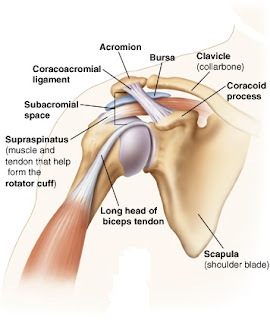Cerebral palsy children
“If a child cannot
learn in a way you teach, you must teach in a way the child can learn”.
I have seen
a cerebral palsy child growing very closely, and being a physiotherapy student
I have also read about what cerebral palsy is and the ways to treat this
condition. This article is for those who are not aware of what cerebral palsy
is.
Cerebral
palsy is a movement disorder which is often congenital. The reason may be some
injury to the brain of the growing fetus or after the first few days of birth,
or a pre mature birth, or maybe some infection during pregnancy, or the
unhygienic birth conditions or difficulty during delivery of the child, like in
case of forceps baby. The condition also occurs due to some genetic reasons.
There are different types of cerebral palsy, namely, spastic, ataxic, diplegic
or athetoid. And the symptoms that the child may have is based on the type of
condition he or she is suffering from. The very first symptom that the mother
will observe will be the delayed developmental milestones, like delayed holding
of neck, delayed sitting or delayed walking as compared to the other children
of the same age group. The other symptoms may include stiff muscles, weak
muscles, poor coordination, and tremors, sometimes the child is not able to
speak or swallow, and you may also observe drooling of saliva from mouth. Children
sometimes have altered vision and loss of hearing abilities. During their early
stages of life, they cannot crawl, roll, or reach objects. There is difficulty
in responding and thinking. This tells us that their brain is not functionally as
active sometimes. The child also might experience episodes of seizures. The
lower and the upper extremity often has some bony deformities or contractures
as a result of not moving, and hence the gait or the walking pattern is
affected. That means the child is not able to walk at all in some cases, while
in some other cases where the condition has not worsened, the child walks but
the pattern of walking is not normal or sometimes scissoring. The child is
unable to perform small activities of daily living, for example, dressing up,
tying shoe lace, buttoning up shirt, or unbuttoning, comb hair etc. and the
reflexes are weak , like the sucking reflex. Due to weak muscles, the child may
have difficulty in holding and gripping objects.
For treating
cerebral palsy there are multiple therapies that work together. There is
medical management along with physiotherapy, occupational therapy, speech
therapy, orthotics, surgical management in severe conditions for tendon lengthening
and muscle lengthening. Hyperbaric oxygen therapy is one more treatment
procedure based on a theory which says that there are inactive cells in the
brain, which has potential to grow with adequate supply of pressurized oxygen,
which can help in normal functioning of those dormant cells.
Physiotherapy plays
an important role in cerebral palsy, it enables the child to perform day to day
life activities on his own. Certain range of motion exercises helps in avoiding
contracture formation and open up the restricted range of motion, along with
the strengthening exercises of the limbs and balance and gait training.
The child I
know is 15 years old girl who was born with a cerebral palsy disorder. The
condition was observed by the mother when the developmental milestones were
delayed as I mentioned above. She is not able to walk, hence use orthotics, she
is not able to speak although she understand what is being said and respond to
it too, but the response is late.
She is
pretty, she is fun loving, she likes new clothes, and she is just like any
other 15 year old girl. Children with cerebral palsy should be supported, they
are not different, just special. Don’t isolate them, don’t misinterpret the
condition. These children are psychologically sound, just a bit slow. Help
these children grow. Support cerebral palsy children.
Take care,
Jasrah




Comments